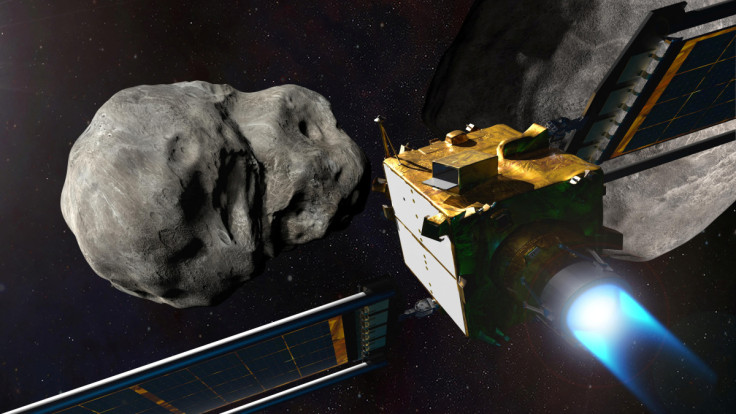'Potentially Hazardous' Asteroid Set To Reach Earth's Orbit On Halloween
KEY POINTS
- The asteroid will be at closest to the Earth on Nov. 1
- It will come within about 1.43 million miles of Earth
- The asteroid will fly past Earth at approximately 68 times the speed of sound
An asteroid almost the size of the world's tallest building is about to zip past Earth on Halloween.
The "potentially hazardous" asteroid named 2022 RM4 is between 1,083 and 2,428 feet (330 and 740 meters) in diameter. The Burj Khalifa, the world's tallest building, is 2,716-foot-tall (828 m) in height.
The gigantic asteroid will buzz past Earth at around 52,500 mph (84,500 km/h), or approximately 68 times the speed of sound.
The asteroid will be at the closest to Earth on Nov. 1 and will come within about 1.43 million miles (2.3 million kilometers) of the planet, which is around six times the average distance between Earth and the moon.
This is a very slim margin, by cosmic standards. For context: NASA tags any object that approaches within 120 million miles (193 million km) of Earth as a "near-Earth object" and also, names any large body within 4.65 million miles (7.5 million km) of the Earth as "potentially hazardous."
Once these objects have been flagged, they are closely monitored by astronomers, who look for signs of any deviation from their predicted trajectories that could put Earth in danger.
Asteroid Terrestrial-impact Last Alert System (ATLAS), a group of four telescopes, helps NASA track the locations and trajectory of about 28,000 asteroids. Every 24 hours, ATLAS performs a complete scan of the entire night sky.
ATLAS has been successful in detecting more than 700 near-Earth asteroids and 66 comets since it was brought online in 2017. Two of these, 2019 MO and 2018 LA, have actually entered Earth's atmosphere.
2019 MO exploded off the southern coast of Puerto Rico and 2018 LA disintegrated near the border of Botswana and South Africa. Fortunately, the asteroids were small enough to not cause any damage.
NASA has already estimated the trajectories of all the near-Earth objects till the end of the century. The space coast is clear, and Earth is danger-free from a catastrophic asteroid collision for at least the next 100 years.
And even if the status quo were to change and Earth was about to go head-on with a devastating asteroid, NASA has plans in place. It has come up with the Double Asteroid Redirection Test (DART) whose aim is to divert such asteroids if the occasion arises.
In fact, on Sept. 26, DART successfully redirected the non-hazardous asteroid Dimorphos off its path by 32 minutes. This was the first successful test of Earth's planetary defense system.
China is also working on possible ways to deflect an asteroid and is in the early phase of such a mission. It intends course correct asteroid Bennu, which will come within 4.6 million miles (7.4 million km) of Earth's orbit between the years 2175 and 2199. It suggests doing so by slamming 23 Long March 5 rockets into the asteroid Bennu.

© Copyright IBTimes 2025. All rights reserved.





















